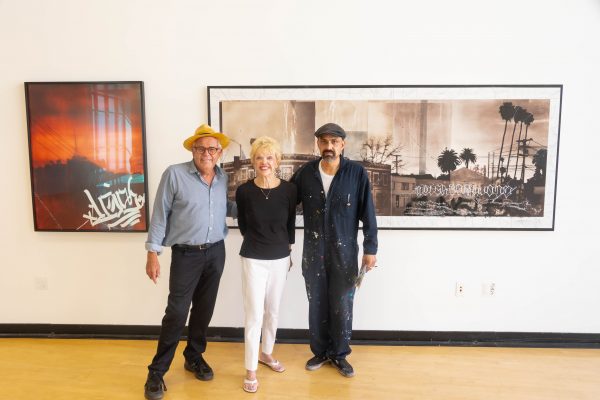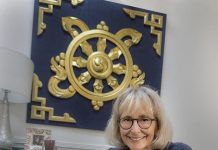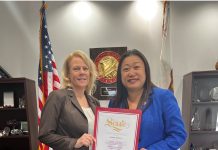Fascinating, in a word, describes the life of art curator Molly Barnes.
For one thing, she was abstract expressionist Willem De Kooning’s summer love, off and on, for 17 years, rendezvousing in the art enclave of East Hampton, Long Island.

Barnes says knowing De Kooning was the pivotal experience of her life. He was considered the most important abstract painter in the United States after Jackson Pollock died, she said, and both artists solidified New York rather than Paris as the vortex of the western art world.
“He represented so many periods of art history, both in Europe and here, and suddenly he liked me,” she said. “I was invited to be a part of that super class, that crowd. I don’t want that to sound snobbish but it was just such a treat for me to step into that world. I got to know the top people because of him.”
Coming from a conservative background—“My mother wore a purse to the dining room table, she was so formal”—she was eager to take the leap and the blond, blue-eyed, “extraordinarily handsome” Dutch De Kooning made it easy.
Barnes herself is anything but snobbish and, granted, the art world can be intimidating. “Art is not for everyone,” she said. “It never has been and it never will be.”
But Barnes is everyone—easy to talk with, an instant best friend, connector of talents and a hopeless matchmaker. She brings a warm, human touch to a scene full of intensity, mystery, indulgences and exclusivity. “If you love art like I do, I want to turn you on,” she says. If you don’t love art, she’ll take you there.
Barnes will be talking about her rarefied experiences inside an illustrious world at the Inside Edgebreakfast meeting at 7 a.m. next Wednesday, Oct. 24, at the Pacific Club in Newport Beach.
She began her foray into art wanting to be a painter. “But I didn’t like being alone that much,” she said. So she became an art dealer. “All the dealers then were women,” she said. “After big money came in, the men took over their place. But back then it was a very nurturing career for a woman.”
Through it all, Barnes has become the living embodiment of art information, both esoteric and anecdotal, and a master at bridging gaps. In 1967, she made it her mission to fill a 2,800-mile gap for her brood of New York artists. “I wanted to nurture them and help them establish their careers and their talent and bring their art to the West Coast,” she said.
“It just seemed like somebody should do it. I really love artists. They’re not good at committees; they’re the happiest when they’re alone with their creativity.” She’s become a patron saint for exceptional artists.
Her first gallery was in the heart of Los Angeles on La Cienega in West Hollywood and one of her first clients was a man with a gun, demanding her to buy a painting for $50,000. Director Billy Wilder happened to be there and distracted the intruder while the police were called.
A week after the attempted stick-up, John Baldessari, artist of the unexpected, walked into her gallery, “looking like a homeless man with a box of paintings,” she said, “I was a little nervous.
“But once he showed me his work, I realized there was something special about it.” And her first superstar in the fine art field was found. She gave him three shows. “When he left my gallery, he gave me a painting,” she said. “I later sold it and bought my apartment in New York.”
In New York, artists are the stars. “In Los Angeles, somebody will say, ‘Yeah, I’m artist,’ and they get a show,” she said. “In New York everybody worships intelligence and the period before. They all know the art movements. People revere thinking and talking and discussion.” The East Coast, she says, is intellectual and academic while the West Coast is physical and outgoing, the mind and the body; climate, admittedly, may have something to do with it.
Even though Barnes now lives on Rodeo Drive, she still thinks of Los Angeles as a western frontier town.
When her second husband, Mauro Capuso, died, Barnes flung herself into her West Coast art endeavors. “I couldn’t say no to anybody,” she said. She picked up where her husband left off at West Los Angeles College in Culver City, where she now runs the art gallery. “I helped him out, then I took over for him.” She’s been teaching “How to Get Hung” to artists wanting to get exhibits at the Otis Art Institute for 17 years.
Her current show features artists from seven different L.A. zip codes. Two of the artists are muralists Prime and Big Sleeps, who, after rough starts, now lead the unique L.A. muralist movement.
Good art, she said, is definitely in the heart of the beholder. “To the innocent collector, art looks pretty on the wall,” she explains. “To the sophisticate, it is often a trading commodity or status-making device. To the true art collector, it is a spiritual connection with people.”




